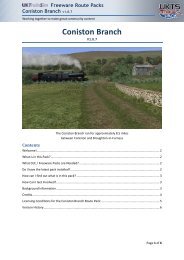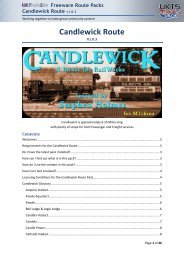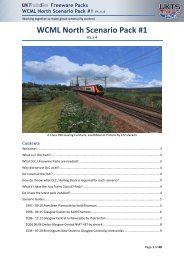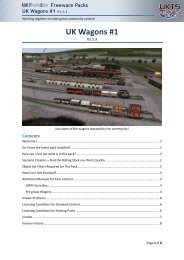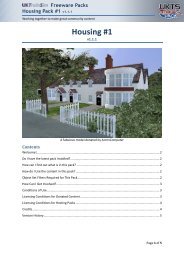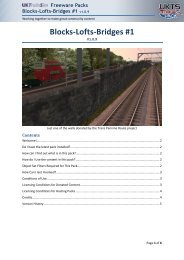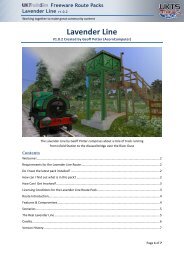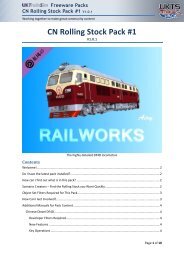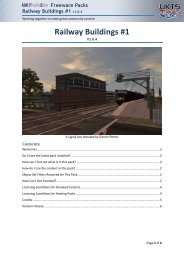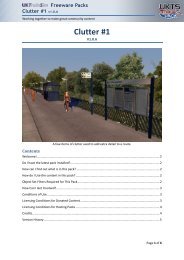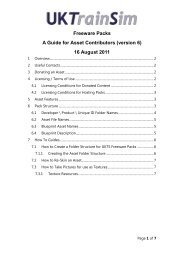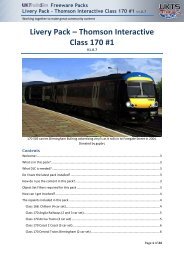UK DMUs-EMUs-Trams #1 - UKTrainSim
UK DMUs-EMUs-Trams #1 - UKTrainSim
UK DMUs-EMUs-Trams #1 - UKTrainSim
Create successful ePaper yourself
Turn your PDF publications into a flip-book with our unique Google optimized e-Paper software.
Freeware Packs<br />
<strong>UK</strong> <strong>DMUs</strong>-<strong>EMUs</strong>-<strong>Trams</strong> <strong>#1</strong>V1.1.5<br />
Working together to make great community content<br />
OR<br />
the engine item:<br />
FP DRB HAP DTCL<br />
plus the wagon item:<br />
FP DRB EPB DMBS 2car<br />
In this configuration the 2 car unit can only be driven from the one end.<br />
Note that HAPs have "express" gearing. When making consists with a mix of HAP and EPB units the<br />
acceleration behaviour will vary if you are actually driving a "HAP" or "EPB" driving car.<br />
Driving this train<br />
Power control<br />
The driver's power controller has 5 discrete positions - OFF, SHUNT, SERIES, PARALLEL and<br />
WEAKFIELD. Off should be clear. SHUNT provides a low power position where acceleration notching<br />
is suppressed. It is for use in shunting movements. The train will "balance" to a speed of about 5mph<br />
on level track in this position. SERIES will allow the power to notch up to half power. PARALLEL<br />
allows the power to advance to full power. To get full train speed the WEAKFIELD position should be<br />
selected. First stage of field weakening occurs at about 40mph.<br />
Although the top speed of this train is 90mph it will struggle to reach this speed on level track.<br />
Note that classic camshaft power control systems like this do not allow "graduated" power release,<br />
ie you can't reduce power by moving the controller direct from PARALLEL to SERIES. To reduce<br />
power first move the controller to OFF, then advance it to SERIES.<br />
Initial starting acceleration from stationary is the same whatever power position is selected, about<br />
0.75 mph/sec.<br />
It is common driving practice to move the controller direct to the WEAKFIELD position when pulling<br />
away.<br />
Brake control<br />
The driver's brake handle provides control of two integrated braking systems - an electro-pneumatic<br />
(EP) system for normal use, and a classic automatic air brake for reversionary use. Either can be used<br />
at any time.<br />
The EP brake is operated between the release position (handle fully to the left) and the first ridge<br />
that can be seen on the brake handle plate. It is a simple proportional, self lapping brake that<br />
provides graduated release. Level of brake application can be determined from the position of the<br />
handle, or the brake cylinder gauge (the middle one, full application is about 56psi). Note the brake<br />
pipe gauge pressure (red needle on the left gauge) does not vary with EP brake applications.<br />
Page 8 of 28



